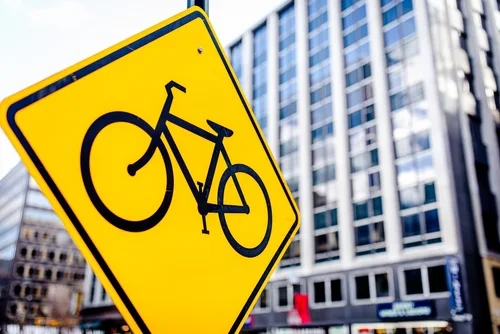Charlotte, North Carolina, is a growing hub for cycling enthusiasts. With its expanding network of bike lanes, greenways, and cycling-friendly events, more residents are biking for daily commutes, exercise, and leisure rides. Understanding bicycle safety laws in Charlotte is critical for keeping yourself and others safe on the road.
This blog post explores bike safety laws in North Carolina that every rider needs to know, including helmet use, safe passing.
Sadly, many bicyclists are injured because of careless drivers. A Charlotte bicycle accident lawyer at Panchenko Law Firm can help victims pursue the compensation they deserve.
Bicycle Safety Laws in Charlotte, North Carolina
Let’s take a closer look at important North Carolina bike laws.
Bicycles Are Considered Vehicles
One of the most important things to understand about cycling in Charlotte is that, under North Carolina law, bicycles are legally considered vehicles. This means cyclists have the same rights and responsibilities as motorists on public roads.
If you’re riding your bike on a public roadway, you must obey the same rules of the road as drivers. That includes stopping at red lights and stop signs, yielding the right of way when appropriate, and signaling your intentions. Simply put: if it’s illegal in a car, it’s illegal on a bike.
Can You Ride a Bike on the Road in North Carolina?
Bicycles can be ridden on all public roadways except fully controlled-access highways, such as interstates. These high-speed roads are designed exclusively for motor vehicles and pose extreme danger to cyclists.
Obeying Traffic Signs and Using Hand Signals
As a cyclist, you are expected to obey all traffic control devices, just like any driver. That means stopping at stop signs, yielding at yield signs, and respecting traffic lights and lane markings.
Additionally, signaling is a key part of communicating with drivers. North Carolina law requires cyclists to use hand signals to indicate turns and stops.
- Hold your left arm extended straight out to signal a left turn.
- Hold your left arm bent upward at the elbow to signal a right turn.
- To signal a stop, extend your left arm downward.
These simple gestures can go a long way in preventing misunderstandings and accidents.
Riding With Traffic and Lane Use
Charlotte cyclists must ride on the right side of the road and in the same direction as vehicle traffic. This rule helps ensure visibility and predictability for all road users.
Bikers are expected to ride as far to the right as practicable. However, there are important exceptions. If a travel lane is too narrow for a bicycle and a motor vehicle to travel safely side by side, a cyclist has the legal right to take the full lane. Additionally, cyclists may use the full lane when preparing for a turn, avoiding hazards, or when moving through intersections.
Passing Rules for Cyclists and Drivers
Passing, whether you’re a cyclist or driver, must be done with caution. Cyclists may only pass on the right if they are in a designated travel lane and it is safe to do so.
Motorists, on the other hand, have specific legal requirements when overtaking cyclists. North Carolina law requires drivers to give at least two feet of clearance when passing a cyclist. When safe to do so, drivers are permitted to cross a double yellow line to pass a bicycle, provided they can allow at least four feet of clearance or fully move into the opposite lane.
These laws are in place to reduce the number of sideswipe and rear-end collisions, which are unfortunately all too common in bicycle accidents.
North Carolina’s Bike Helmet Law
Helmet use is a cornerstone of bicycle safety. In North Carolina, state law requires all cyclists under the age of 16 to wear a helmet while riding on public roads, bike paths, or public rights-of-way. This includes passengers, such as young children riding in a carrier or trailer.
Although the law doesn’t mandate helmets for adults, it’s strongly recommended. Numerous studies have shown that wearing a helmet significantly reduces the risk of serious head injury in the event of a crash. Whether you’re a casual rider or a daily commuter, wearing a helmet is a simple and effective way to protect yourself.
Required Bike Equipment and Lighting
To ensure safety during nighttime or low-light conditions, North Carolina has specific requirements for bicycle equipment:
- Brakes: Your bicycle must have a functioning brake capable of making the bike skid on dry pavement.
- Front Light: A white light that is visible from at least 300 feet in front of the bicycle is required.
- Rear Reflector or Light: A red reflector or light visible from at least 200 feet from the rear is also mandatory.
These requirements help ensure that both cyclists and drivers can see and be seen in dark or foggy conditions, greatly reducing the risk of collisions.
Biking Under the Influence Is Illegal
In North Carolina, bicyclists can get a DWI/DUI for riding while under the influence of alcohol or drugs. Under N.C. Gen. Stat. § 20-138.1, it is illegal to operate any vehicle, including bicycles, on a highway, street, or public vehicular area while:
- Having a blood alcohol concentration (BAC) of 0.08% or higher.
- Being appreciably impaired by alcohol, drugs, or a combination of both, even if your BAC is below 0.08%.
- Having any amount of a Schedule 1 controlled substance in your system.
Law enforcement can stop and test bicyclists for impairment using breathalyzers or field sobriety tests if they suspect intoxication.
Yielding to Pedestrians
Cyclists, like drivers, must yield to pedestrians in crosswalks. This is especially important on multi-use paths, greenways, and at urban intersections. Failing to yield not only endangers pedestrians but can also result in fines or legal consequences for the cyclist.
Always approach crosswalks with caution, reduce your speed, and be prepared to stop if a pedestrian is present. Sharing the road means sharing the responsibility for everyone’s safety.
Bicycle Safety Tips
In addition to knowing the law, here are some practical tips that can help keep you safe on Charlotte roads:
- Pre-Ride Check: Before heading out, check your bike’s tires, brakes, and chain to ensure everything is in working order.
- Use Designated Paths: When available, use bike lanes and greenways. These are designed with your safety in mind.
- Be Visible: Wear bright, reflective clothing and use lights even during the day. Make it easy for drivers to see you.
- Stay Alert: Keep an eye on the road ahead, watch for turning vehicles, and avoid distractions like headphones.
- Avoid Dooring: Stay a safe distance from parked cars to avoid being hit by a suddenly opened door.
Panchenko Law Firms Advocates for Bike Accident Victims
Riding a bike in Charlotte can be a safe, healthy, and enjoyable experience, but only when everyone follows the rules. Understanding and obeying bicycle safety laws is crucial.
If you’ve been injured in a cycling accident caused by a careless or negligent driver, Panchenko Law Firm is here to help. As experienced Charlotte bicycle accident lawyers, we understand the physical, emotional, and financial toll that an accident can take. We’ll fight to protect your rights and help you seek the compensation you deserve.
Contact us today for a free consultation.






